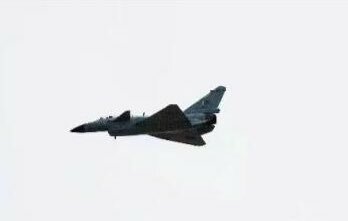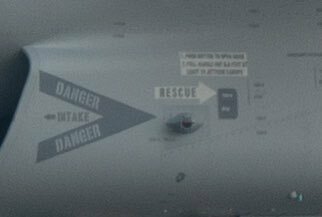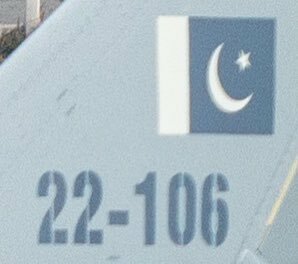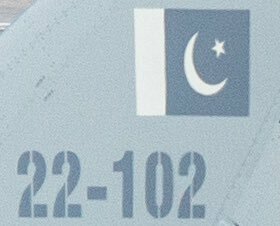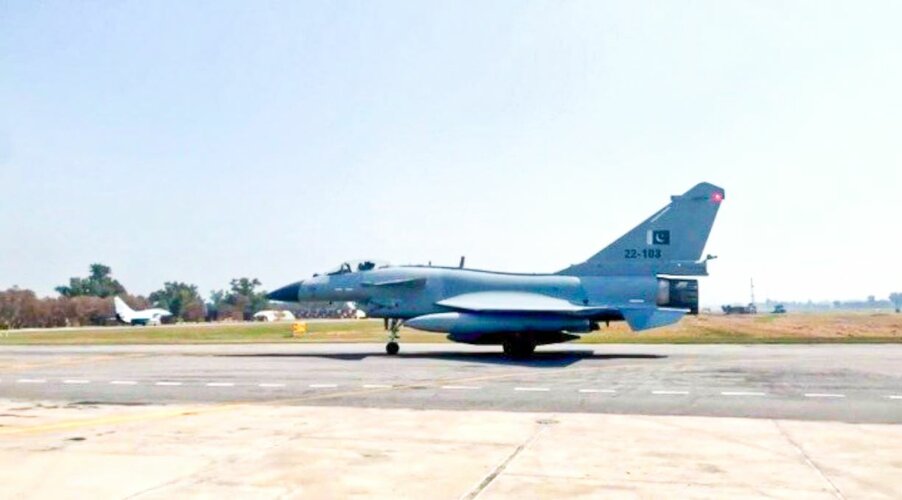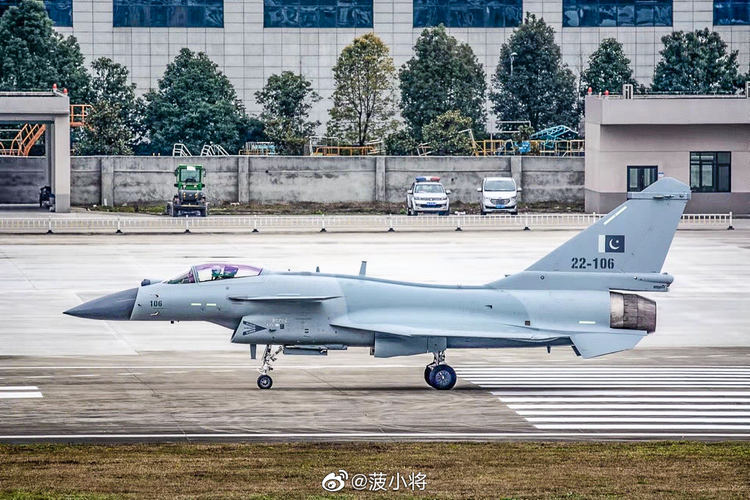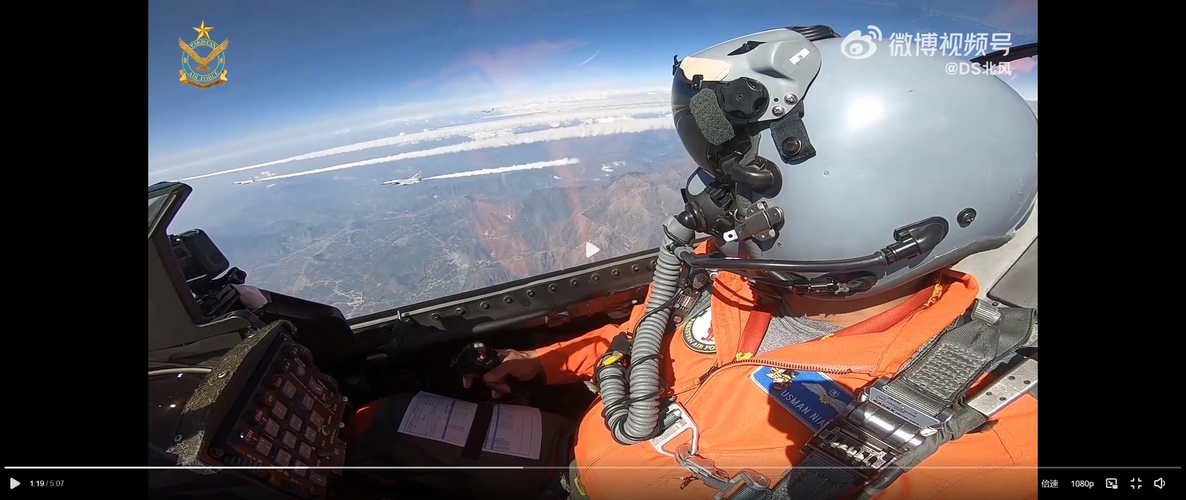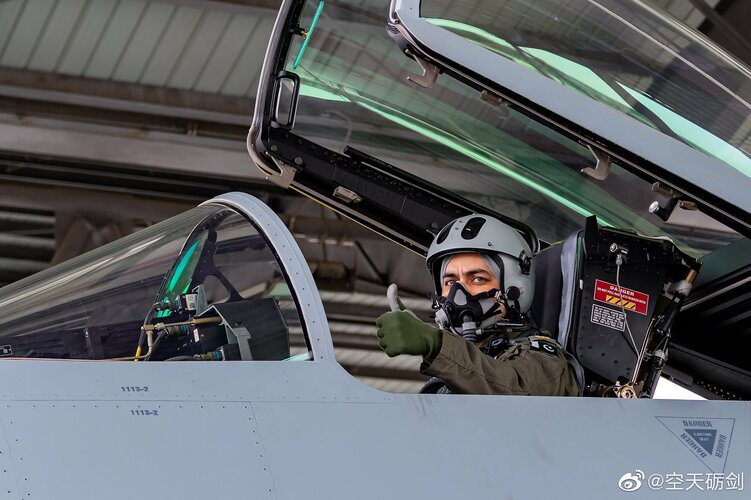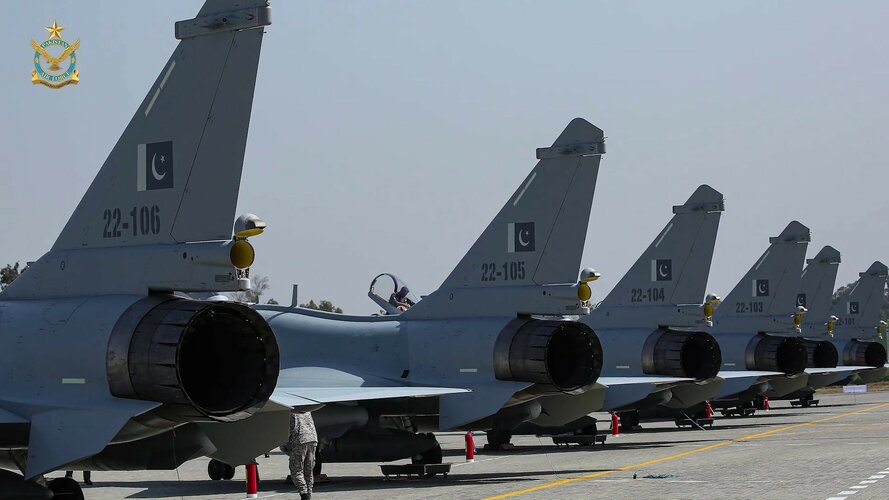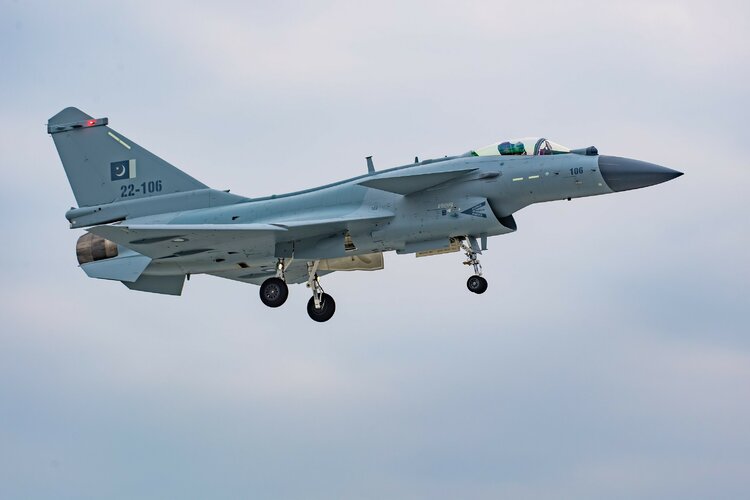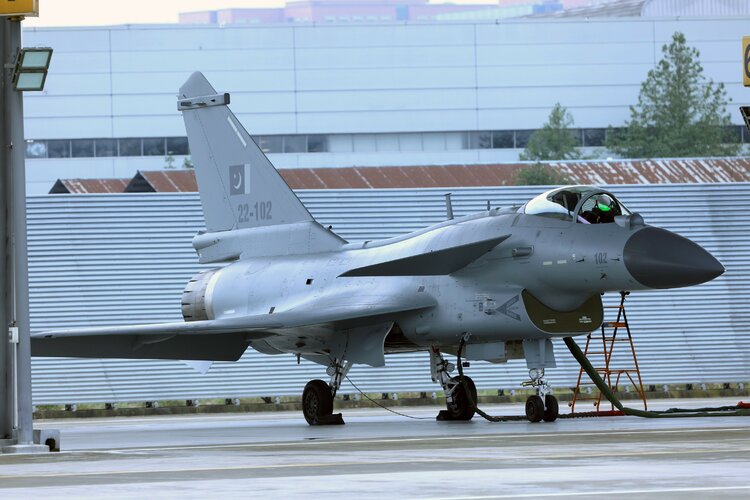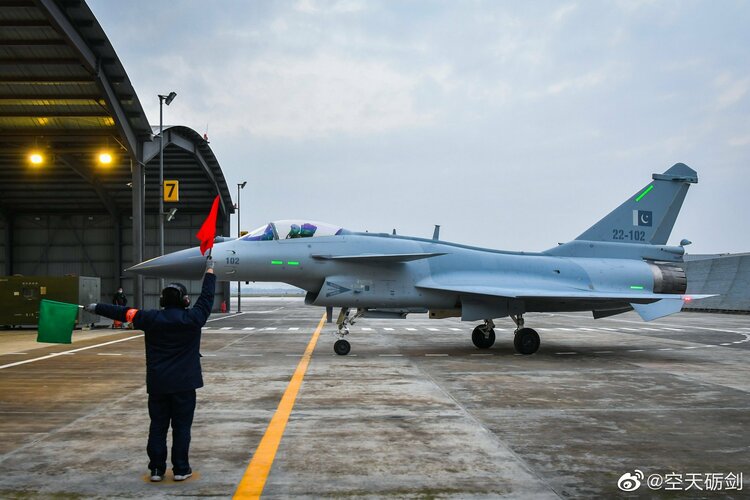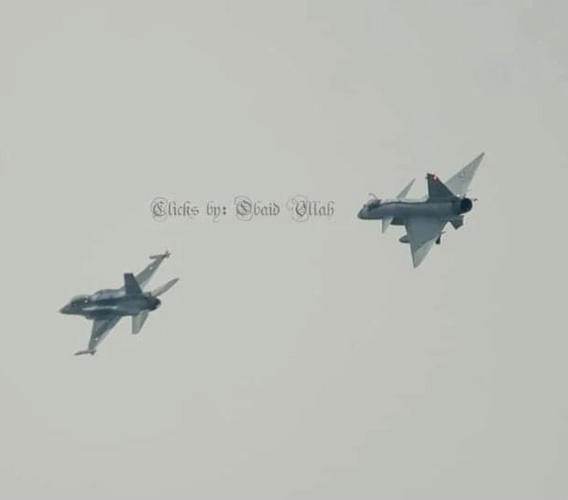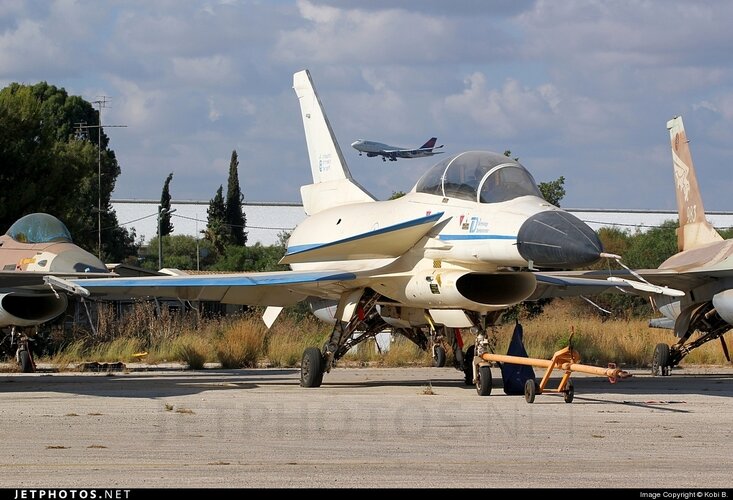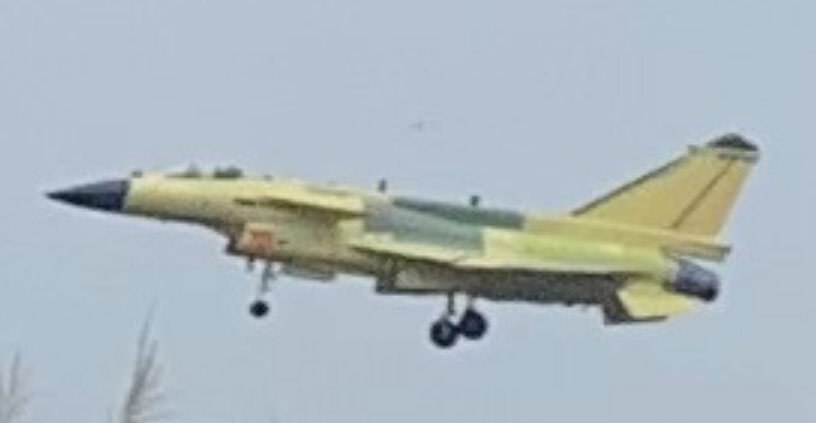You are using an out of date browser. It may not display this or other websites correctly.
You should upgrade or use an alternative browser.
You should upgrade or use an alternative browser.
Chengdu J-10 "Vigorous Dragon" fighter
- Thread starter overscan (PaulMM)
- Start date
- Joined
- 11 February 2010
- Messages
- 1,641
- Reaction score
- 2,677
Looks promising. Phased array radar, more thrust and basically it's similar as what Chinese use. This plane would be equivalent to the latest F-16's with benefit of more weapons type.
- Joined
- 29 November 2010
- Messages
- 1,772
- Reaction score
- 3,469
really beautiful plane.. the changes from the J-10A to S? was also a huge aesthetic change for the better too.
Pakistan should have gone for the J-10 in the first place.
Pakistan should have gone for the J-10 in the first place.
siegecrossbow
I really should change my personal text
- Joined
- 12 March 2012
- Messages
- 706
- Reaction score
- 2,099
alberchico
I really should change my personal text
- Joined
- 14 January 2014
- Messages
- 704
- Reaction score
- 1,507
alberchico
I really should change my personal text
- Joined
- 14 January 2014
- Messages
- 704
- Reaction score
- 1,507

Pakistan Has Taken Delivery Of Its First Chinese-Made J-10 Fighters
The multi-role fighters may well be joined by as many as three different armed drones as Pakistan seeks to gain an advantage over India’s military.
- Joined
- 27 December 2005
- Messages
- 17,707
- Reaction score
- 26,150
Some very nice high res photos. J-10CE is confirmed as the official designation by stencilling on the aircraft.
J-10 Thread IV
So china expert wasnt lying when they laugh at naysayer criticizing J10 for its low payload o_O It's still not exceptional loadout for a fighter of its generation.
www.sinodefenceforum.com
Attachments
F-2
ACCESS: Top Secret
- Joined
- 22 May 2020
- Messages
- 873
- Reaction score
- 1,696
I’ve always really liked the J-10. The J-10 actually got very early exposure in popular media in the 2005 video game Battlefield 2 where it’s one of the best regarded aircraft in game. Since the F-2 has always been my favorite plane, I was really excited that another single engine high highly agile fighter existed in East Asia, it was really fun for making scenarios and the like. The J-10B was extremely exciting because where as the A was a cool looking aircraft I thought it was a bit crude in looks with that boxy intake and short nose and technology (2005 being when the raptor came out and after the best known 4.5 gen aircraft) but the B looked so elegant and had some kinda phase array radar seemed at least very high tech. Over night it became my favorite “red” plane and still probably is at least in terms of mass production.
Anyway this has been a very long winded way of saying I’ve been following the J-10 since I was 14 and I’m happy to see it finally find success in the export market rather be an obscure solely domestic aircraft.
Anyway this has been a very long winded way of saying I’ve been following the J-10 since I was 14 and I’m happy to see it finally find success in the export market rather be an obscure solely domestic aircraft.
aonestudio
I really should change my personal text
- Joined
- 11 March 2018
- Messages
- 2,962
- Reaction score
- 7,472
I’ve always really liked the J-10. The J-10 actually got very early exposure in popular media in the 2005 video game Battlefield 2 where it’s one of the best regarded aircraft in game. Since the F-2 has always been my favorite plane, I was really excited that another single engine high highly agile fighter existed in East Asia, it was really fun for making scenarios and the like. The J-10B was extremely exciting because where as the A was a cool looking aircraft I thought it was a bit crude in looks with that boxy intake and short nose and technology (2005 being when the raptor came out and after the best known 4.5 gen aircraft) but the B looked so elegant and had some kinda phase array radar seemed at least very high tech. Over night it became my favorite “red” plane and still probably is at least in terms of mass production.
Anyway this has been a very long winded way of saying I’ve been following the J-10 since I was 14 and I’m happy to see it finally find success in the export market rather be an obscure solely domestic aircraft.
And according to Wikipedia the Chinese have built 488 airframes so far. Now that's quite a respectable number.
- Joined
- 29 November 2010
- Messages
- 1,772
- Reaction score
- 3,469
i just realized the Pakistani J-10s dont have a refuelling probe. any plans to add these later?
also interesting that North Korea might be the next operator.. but I feel its financially unlikely unless China is donating some old airframes.
quite interested to hear PAF exercises between its j-10 and F-16 fleets
siegecrossbow
I really should change my personal text
- Joined
- 12 March 2012
- Messages
- 706
- Reaction score
- 2,099
i just realized the Pakistani J-10s dont have a refuelling probe. any plans to add these later?
also interesting that North Korea might be the next operator.. but I feel its financially unlikely unless China is donating some old airframes.
quite interested to hear PAF exercises between its j-10 and F-16 fleets
They do have it actually.
Refueling probe can actually be very easily attached/detached.
F-2
ACCESS: Top Secret
- Joined
- 22 May 2020
- Messages
- 873
- Reaction score
- 1,696
quite interested to hear PAF exercises between its j-10 and F-16 fleets
siegecrossbow
I really should change my personal text
- Joined
- 12 March 2012
- Messages
- 706
- Reaction score
- 2,099
- Joined
- 29 November 2010
- Messages
- 1,772
- Reaction score
- 3,469
^ a video of the J-10C in Pakistan's airshow, alongside the F-16.
I knew the J-10 was larger, but seeing it next to the F-16.. its a lot larger than I thought
View: https://www.youtube.com/watch?v=zJ4Na3oK-2A
I knew the J-10 was larger, but seeing it next to the F-16.. its a lot larger than I thought
siegecrossbow
I really should change my personal text
- Joined
- 12 March 2012
- Messages
- 706
- Reaction score
- 2,099
^ a video of the J-10C in Pakistan's airshow, alongside the F-16.
I knew the J-10 was larger, but seeing it next to the F-16.. its a lot larger than I thought
View: https://www.youtube.com/watch?v=zJ4Na3oK-2A
It is around 2 meters longer to optimize high speed performance. It is also "taller", but not as wide, with shorter winspan and smaller girth.
F-2
ACCESS: Top Secret
- Joined
- 22 May 2020
- Messages
- 873
- Reaction score
- 1,696
So a lot of the early J-10 history is merky, including when exactly the aircraft first flew in 1996 or 1998. But years ago their was a topic on key about an earlier turbojet powered prototype. I recently found similar claims on the Chinese web. The 1991 metal mock up may be no mock-up at all
 m.sohu.com
m.sohu.com
 www.zhihu.com
www.zhihu.com
讲武谈兵|巴歼-10C战机选择“太行”发动机,意义有多大_推力_我国_性能
也正是通过在歼-11系列战斗机上不断进行飞行、发现问题、改进、继续飞行的迭代循环,“太行”发动机如同几番浴火重生的“凤凰”,终于展翅苍穹、笑傲九天,如今才得以看到歼-11BS、歼-15S、歼-16等后…
Here is another siting the chief engineers autobiographyIn fact, the J-10 fighter has experienced several twists and turns in the selection and configuration of the power system. In 1984, the J-10 fighter development project codenamed "Project 10" was officially launched, and the duck static and unstable layout was initially determined as the final design scheme. However, it is followed by the selection of an advanced jet engine for the J-10 fighter. At that time, the jet engines for various types of fighters existing and under development in China, from turbojet 7, turbojet 13 imitating Soviet engines to imitation turbofan 9 and self-developed turbofan 6, could not meet the requirements of J-10 fighters, especially the gap in thrust indicators.
At that time, the United States and the Soviet Union began to develop a new generation of large-thrust turbofan engines while the third-generation fighter was developed and launched. However, with the strength of China's aviation industry, it is not possible to develop a new type of high-thrust turbofan engine while ensuring the research and development progress of the J-10 fighter. It happened that our country obtained the Soviet MiG-23 fighter from Egypt, and thus obtained the R29-300 turbojet engine with a stre of more than 10 tons of man-forced thrust. This was also the most advanced foreign jet engine that China could come into contact with at that time. Its 12.5 tons of aggravation thrust could basically meet the performance requirements of J-10 fighters.
Therefore, while determining the design plan of the J-10 fighter, China's aviation industry department decided to adopt a two-step strategy in the power system - first, imitate the Soviet-made R29-300 turbojet engine, codenamed vortex spray 15, and strive to complete the design as soon as possible to ensure that the J-10 fighter arrives to There are few power systems that can be used. The second step is to start the development of a new high-thrust turbofan engine codenamed Turbofan 10. Using the Turbojet 15 turbojet engine to equip J-10 fighter prototypes for test flight, the development of the Turbofan-10 "Taihang" high-thrust turbofan engine will be completed as soon as possible, and finally realize the design goal of "dual combination" of J-10 and Turbofan 10.

The early J-10 fighter full-size metal prototypes also used an oval leather-hosted inlet similar to the F-16.
However, to the surprise of Chinese aviation industry technicians, even if the physical object of the Soviet R29-300 turbojet engine is obtained for mapping and simulation, the research and development of the turbojet 15 engine is still very difficult. For us, the technical span from vortex 7/13 to vortex 15 is too large. Therefore, from 1984 to 1991, the engine research and development unit of China's aviation industry only completed the full-size metal prototype of the turbojet 15 engine. This year, the full-size metal prototype of the turbojet 15 engine was also equipped with the full-size metal prototype of the J-10 fighter, formally achieving the goal of two-machine integration. It is worth noting that at this time, the full-size metal prototype of the J-10 fighter still uses an oval leather-hosted air inlet similar to the F-16. Moreover, at that time, the rear fuselage and engine compartment of the J-10 were designed according to the size of Turbojet 15.
If the Turbojet 15 engine was continued to be developed as a J-10 fighter as planned at that time, even if the development progress can be guaranteed, the reliability of this engine may have many adverse effects on the test flight of the fighter. At that time, the replacement of the J-8III fighter with a Turbojet 14 engine was one of the most typical lessons. Moreover, according to the development trend of the third-generation foreign fighter at that time, the high fuel consumption turbojet engine has long been completely eliminated. Unexpectedly, everything turned around in 1991. That year, our country decided to introduce the world's most advanced Su-27 twin-produced heavy fighter from the Soviet Union. For this reason, after learning about the performance of the AL-31F high-thrust turbofan engine equipped by the Su-27 fighter, the relevant units found that the engine meets the requirements of the J-10 fighter, and its technical level is far from comparable to that of the imitation R29-300 turbojet 15 engine.
Therefore, after consultation and consultation with the leaders of the army, the relevant departments of the aviation industry finally decided to stop the imitation of the turbojet 15 engine in 1993 and select the Russian AL-31F high-thrust turbofan engine as the power system of the J-10 fighter. Due to its excellent performance and reliable leather, it will not only be used as a power system for the test flight stage of the J-10 fighter, but also continue to be used as a supporting power system for future mass production models. Of course, Russia also needs to improve and modify the AL-31F high-thrust turbofan engine in accordance with the installation requirements of the J-10 fighter, mainly to move the accessory receiver and other components under the engine to adapt to the single-engine and single vertical tail design. This is the AL-31FN that China purchased in large quantities all year round, and Russia later even developed a vector thrust version of this engine.
歼10发动机选定的涡喷15是仿制米格23的r29发动机,未定型,被迫换al31fn,涡喷15如何? - 知乎
宋老回忆录里面写的很清楚,试飞后全部性能都低于之前的预期。就因为R29换成了al31F。听上去r29是个落后…
. Hate to embrace the comparison of the two groups of emblems. Everyone also hopes to see the difference between these two groups of emblems. Recently, I have been pondering. What is the reason for this situation? Song Wen looked around at the hole in the venue and then continued: "After repeated calculations, he came to the conclusion that this is due to the replacement of the engine of the aircraft. The shape of the turbofan engine is larger. When changing the engine, the size of the rear fuselage is thickened. This will cause the force to increase. At the same time, it seems that the power of the two secondary engines is similar in theory. However, in actual use, the turbojet is changed to a turbofan. There are obvious differences in fan speed characteristics with different vertebral forces. Two A Two A Two
Attachments
- Joined
- 29 November 2010
- Messages
- 1,772
- Reaction score
- 3,469
^ makes me wonder if Chengdu was able to get a better engine earlier, would the J-10 airframe become smaller in size?
F-2
ACCESS: Top Secret
- Joined
- 22 May 2020
- Messages
- 873
- Reaction score
- 1,696
The Lavi is just a hair under parity in thrust to weight the standard 50% few light a2a load. The J-10a is just a hair over. I figure the J-10a Gripen and Lavi all fair closely resemble each other in their flight characteristics. Later J-10s have a higher thrust to weight in the ballpark of other 4th gen aircraft thanks to more powerful engines. I’m sure they would have liked to have had a smaller lighter jet from the start which could have had respectable power with the thrust to weight of the time.
alberchico
I really should change my personal text
- Joined
- 14 January 2014
- Messages
- 704
- Reaction score
- 1,507
View: https://mobile.twitter.com/Fighterman_FFRC/status/1546713521811070976
Is this potentially a new variant with a fatter dorsal spine being tested or just a one off ?
Is this potentially a new variant with a fatter dorsal spine being tested or just a one off ?
FighterJock
ACCESS: Above Top Secret
- Joined
- 29 October 2007
- Messages
- 5,577
- Reaction score
- 5,892
View: https://mobile.twitter.com/Fighterman_FFRC/status/1546713521811070976
Is this potentially a new variant with a fatter dorsal spine being tested or just a one off ?
I would not be surprised if it was not some sort of EW/jammer aircraft that the PLAAF are testing, certainly from looking at the dorsal spine that could be what it is for.
siegecrossbow
I really should change my personal text
- Joined
- 12 March 2012
- Messages
- 706
- Reaction score
- 2,099
View: https://mobile.twitter.com/Fighterman_FFRC/status/1546713521811070976
Is this potentially a new variant with a fatter dorsal spine being tested or just a one off ?
I would not be surprised if it was not some sort of EW/jammer aircraft that the PLAAF are testing, certainly from looking at the dorsal spine that could be what it is for.
PLAAF already has J-16D. If anything this is probably intended for export. Assuming that the phot is real that is.
I imagine it'd have more electronics but not necessarily turning it into a dedicated EW variant. Just like in the F-16s that have the extended spine I'm sure it'd house a more capable ECM suite or something along these lines. Nothing particularly extraordinary, just something that wouldn't fit in a normal J-10.
Another possibility is it's actually a fuel tank a-la MiG-21. I'm sure pilots and the PLAAF wouldn't complain about a J-10 with slightly longer legs (and without the massive penalties of drop tanks), but I doubt it as it'd probably be better to develop and use CFTs, since almost every other 4/4.5th gen fighter went that route.
Another possibility is it's actually a fuel tank a-la MiG-21. I'm sure pilots and the PLAAF wouldn't complain about a J-10 with slightly longer legs (and without the massive penalties of drop tanks), but I doubt it as it'd probably be better to develop and use CFTs, since almost every other 4/4.5th gen fighter went that route.
FighterJock
ACCESS: Above Top Secret
- Joined
- 29 October 2007
- Messages
- 5,577
- Reaction score
- 5,892
I imagine it'd have more electronics but not necessarily turning it into a dedicated EW variant. Just like in the F-16s that have the extended spine I'm sure it'd house a more capable ECM suite or something along these lines. Nothing particularly extraordinary, just something that wouldn't fit in a normal J-10.
Another possibility is it's actually a fuel tank a-la MiG-21. I'm sure pilots and the PLAAF wouldn't complain about a J-10 with slightly longer legs (and without the massive penalties of drop tanks), but I doubt it as it'd probably be better to develop and use CFTs, since almost every other 4/4.5th gen fighter went that route.
An advanced ECM suite is likely with the white aerial above the engine pointing to such use, thereby reducing the need for an external pod taking up hard points.
I tend to agree with you about the fuel issue as well with the extra space ahead of the ECM jammer could be for that purpose.
BLACK_MAMBA
ACCESS: Secret
- Joined
- 17 July 2019
- Messages
- 382
- Reaction score
- 876
Maybe I'm looking in the wrong place but the white above the engine is the drogue chute cover.
An advanced ECM suite is likely with the white aerial above the engine pointing to such use, thereby reducing the need for an external pod taking up hard points.
FighterJock
ACCESS: Above Top Secret
- Joined
- 29 October 2007
- Messages
- 5,577
- Reaction score
- 5,892
Maybe I'm looking in the wrong place but the white above the engine is the drogue chute cover.
An advanced ECM suite is likely with the white aerial above the engine pointing to such use, thereby reducing the need for an external pod taking up hard points.
Now that you mention it BLACK_MAMBA, a drogue chute cover could be the most likely answer. I had never thought of that before.
Ainen
I really should change my personal text
- Joined
- 25 August 2011
- Messages
- 1,236
- Reaction score
- 1,647
J-16 consumes x2 engines(and x2 spares for them), x2 pilots, and x2 fuel though.PLAAF already has J-16D. If anything this is probably intended for export. Assuming that the phot is real that is.
siegecrossbow
I really should change my personal text
- Joined
- 12 March 2012
- Messages
- 706
- Reaction score
- 2,099
J-16 consumes x2 engines(and x2 spares for them), x2 pilots, and x2 fuel though.PLAAF already has J-16D. If anything this is probably intended for export. Assuming that the phot is real that is.
That’s not how it works. J-16 is neither twice as long nor twice as heavy as the J-10C.
Ainen
I really should change my personal text
- Joined
- 25 August 2011
- Messages
- 1,236
- Reaction score
- 1,647
Still the number of engines is x2, of pilots - x2, and of fuel - x2.J-16 consumes x2 engines(and x2 spares for them), x2 pilots, and x2 fuel though.PLAAF already has J-16D. If anything this is probably intended for export. Assuming that the phot is real that is.
That’s not how it works. J-16 is neither twice as long nor twice as heavy as the J-10C.
And weights differ indeed pretty close to 2:1.
Ground maintenance is an interesting story - while the substantial number of equipment is x1 on a twin-engined heavy fighter - since we're talking about Sukhoi (i.e. the fighter that can't mostly even be reached, much less serviced, from the ground level) - it's here, too.
J-16 doesn't need to be defended - it's powerful and impressive, everyone knows that. But it's a huge and expensive beast.
Average mission doesn't need that much.
alberchico
I really should change my personal text
- Joined
- 14 January 2014
- Messages
- 704
- Reaction score
- 1,507

China’s J-10 Fighter Spotted In New ‘Big Spine’ Configuration (Updated)
The modification to China's J-10 fighter follows along a very similar evolutionary path as its counterpart, the American F-16.
This article summarizes everything we know so far about this variant.
- Joined
- 2 January 2006
- Messages
- 3,815
- Reaction score
- 5,009
View: https://mobile.twitter.com/Fighterman_FFRC/status/1546713521811070976
Is this potentially a new variant with a fatter dorsal spine being tested or just a one off ?
Update
View: https://twitter.com/RupprechtDeino/status/1549626166151155713
FighterJock
ACCESS: Above Top Secret
- Joined
- 29 October 2007
- Messages
- 5,577
- Reaction score
- 5,892
View: https://mobile.twitter.com/Fighterman_FFRC/status/1546713521811070976
Is this potentially a new variant with a fatter dorsal spine being tested or just a one off ?
Update
View: https://twitter.com/RupprechtDeino/status/1549626166151155713
This plane just gets stranger and stranger Deino, I wonder what use would a device for releasing smoke trails on a fighter like the J-10C have? Weird.
Manuducati
ACCESS: Secret
- Joined
- 25 November 2020
- Messages
- 328
- Reaction score
- 1,056
This plane just gets stranger and stranger Deino, I wonder what use would a device for releasing smoke trails on a fighter like the J-10C have? Weird.
Chemtrail generator?
Maybe just a relocated fuel dump because the rear of the spine is now occupied by parachute and/or some antenna?
BLACK_MAMBA
ACCESS: Secret
- Joined
- 17 July 2019
- Messages
- 382
- Reaction score
- 876
The parachute has been there from the A model so not a relocated fuel dump - at least not because of parachute/sensor.
Chemtrail generator?
Maybe just a relocated fuel dump because the rear of the spine is now occupied by parachute and/or some antenna?
Similar threads
-
-
Shenyang FC-31 demonstrators / J-35 naval fighter / J-35A land-based version
- Started by Foxglove
- Replies: 994
-
Iran to get Chinese J-10 fighters in return for oil rights
- Started by Triton
- Replies: 4
-
-

